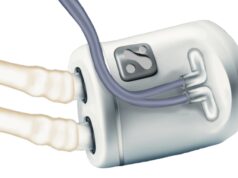 The financial incentives offered by a recent US government programme for hospitals and clinicians to utilise home dialysis for end-stage kidney disease (ESKD) have not caused statistically significant changes in usage of the treatment. This is the conclusion of a study published by Yunan Ji (Georgetown University, Washington DC, USA) and colleagues to the JAMA Health Forum last month.
The financial incentives offered by a recent US government programme for hospitals and clinicians to utilise home dialysis for end-stage kidney disease (ESKD) have not caused statistically significant changes in usage of the treatment. This is the conclusion of a study published by Yunan Ji (Georgetown University, Washington DC, USA) and colleagues to the JAMA Health Forum last month.
Estimates suggest that 85% of Medicare patients with ESKD are eligible for home dialysis, which is cheaper and equally or more effective than facility dialysis, but only 12.6% of those actually receive it. In an effort to increase this number to a target of 80%, the US Centre for Medicare and Medicaid Innovation (CMMI) employed a new payment incentive system, the End-Stage Renal Disease Treatment Choice (ETC) programme, to encourage clinicians to adopt home dialysis.
The ETC incentive system works through two methods. The first increases the reimbursement rate for home dialysis in the first three years of the programme, while the other increases or decreases the rate for home and facility treatment based on the rate of home dialysis and treatment. The authors of the study followed the ETC specifications with some minor adjustments to eligibility criteria.
Researchers examined the statistics from 302 hospital referral regions (HRRs) in the USA, including 91 randomised to the treatment group where financial incentives were implemented and 211 to a control group where they were not. The primary outcome was the percentage of patients receiving dialysis at home in their first 90 days of treatment.
The study’s analysis found no meaningful difference in rates of home dialysis after those first 90 days between the two groups. The control HRRs saw a rate of 20.60% while the treatment group saw one of 20.72%. This lack of difference led the study authors to suggest that larger financial incentives may have been required to deliver a significantly higher uptake of home dialysis treatment. It was noted that the 90-day period examined by the study limited it from assessing the effect of larger incentives, which were implemented in later years of the programme.
An editorial on the study led by Sri Lekha Tummalapalli (Cornell University, New York, USA) suggested that lack of increase in home treatment rates may be a result of the fact that “care redesign to shift dialysis into the home is complex and time-consuming,” while “many frontline nephrologists may still be unaware of the ETC model.” Future studies, he said, should also account for the fact that “randomised payment models operate pragmatically in real-world settings that are not fully controlled.” The CMMI is implementing the new Kidney Care Choices payment model in 2022.












